 As I’ve indicated in previous posts in this series, I can agree with Thomas E. Patterson in supporting, as formal requirements for critics, the “five competencies” identified by Wolfgang Donsbach and Thomas Fielder “that journalists need to acquire: (1) awareness of relevant history, current affairs, and analytical thinking; (2) expertise in the specific subjects to be reported upon; (2) knowledge of the processes of journalism; (4) awareness of ethical standards; and (5) mastery of practical skills.”
As I’ve indicated in previous posts in this series, I can agree with Thomas E. Patterson in supporting, as formal requirements for critics, the “five competencies” identified by Wolfgang Donsbach and Thomas Fielder “that journalists need to acquire: (1) awareness of relevant history, current affairs, and analytical thinking; (2) expertise in the specific subjects to be reported upon; (2) knowledge of the processes of journalism; (4) awareness of ethical standards; and (5) mastery of practical skills.”
And I can share Patterson’s endorsement of the acquisition of “systematic knowledge” in a critic’s area of concentration ― basically, items (1) and (2) in the Donsbach-Fielder formula, above. All those things can be taught ― transmitted effectively through a formal educational process.
Wild Knowledge
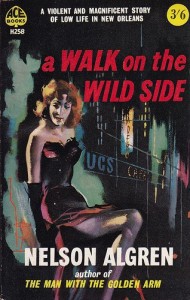 But, as Nelson Algren wrote in A Walk On the Wild Side, “Smart from books ain’t so smart.” Thus the critic of any medium needs to add to that mix his or her own version of what some call “wild knowledge”: non-canonical materials, experiences, concepts, ways of thinking; heterodox and even heretical approaches to the subjects under consideration; a readiness, even an eagerness, to challenge received ideas, including one’s own. Throw in curiosity. Fearlessness in voicing one’s own opinion. And preparedeness to stand by one’s words or eat them. By definition, you can’t teach those abilities and tendencies.
But, as Nelson Algren wrote in A Walk On the Wild Side, “Smart from books ain’t so smart.” Thus the critic of any medium needs to add to that mix his or her own version of what some call “wild knowledge”: non-canonical materials, experiences, concepts, ways of thinking; heterodox and even heretical approaches to the subjects under consideration; a readiness, even an eagerness, to challenge received ideas, including one’s own. Throw in curiosity. Fearlessness in voicing one’s own opinion. And preparedeness to stand by one’s words or eat them. By definition, you can’t teach those abilities and tendencies.
On top of which the critic must develop his or her own distinctive, autonomous voice. Journalism, by definition, speaks to us in the one-size-fits-all persona of ostensibly detached, neutral, objective witnessing. Live-performance journalism ― on radio, broadcast TV, the internet ― individuates the reporter from a theatrical standpoint, via appearance, body language, vocal qualities, and such: Greta Van Susteren doesn’t sound like Geraldo Rivera, who doesn’t sound like Rachel Maddow, and so on. But, stripped of those visual and auditory cues, the actual spoken or written content of their reportage becomes interchangeable; political slant aside, you can’t tell one from the other on paper.
The critic doesn’t just organize data into information, and strive to turn information into knowledge, as a good journalist must. The critic’s role combines the function of the reporter (gathering of facts, and responsibility to them) with that of the op-ed-writer (interpretation of the facts and articulation of an informed opinion based on them).

The critic makes an argument in support of a position, revealing the thought processes involved, often in ways less linear and more circumambulatory than serious journalism allows ― something that allows wandering and serendipity, more on the order of Walter Benjamin’s flâneur. Unless they subscribe to some orthodoxy, no two critics will think like or even use the same vocabulary. Arthur Danto didn’t think or sound like Hilton Kramer, who didn’t think or sound like Kim Levin, who doesn’t think or sound like me.
Call of the Wild
As someone who has studied with teachers, and who has in turn taught and had others study with him, I don’t think you can “teach” wild knowledge, any more than you can teach voice and tone; the very notion seems oxymoronic. I’ve taught courses on the history of photo criticism; I’ve taught the works of a wide range of critics; I teach strategies of critical thinking; but I don’t think I’ve ever taught anyone to be a critic, or to sound like themselves and no one else. At best, in my own writings and lectures, and teaching, I’ve modeled that, in an eccentric, one-off way. Because, in the last analysis, as the film critic P. Adams Sitney once said, “Criticism isn’t a profession, it’s a disposition of the soul at certain moments.”

By definition, no one can teach anyone that “disposition of the soul,” nor train anyone in it. I don’t even consider it realistic to expect post-secondary institutions to do anything more than pay lip service to it. You can’t write lesson plans for nonconformity. At best, in a particular school and a particular program, a small cluster of faculty will embrace and foster it for as long as they can get away with doing so, or at least stay out of the way of students so inclined; and a half-dozen or so graduating classes of students will find their way to those environments and benefit from them before institutional calcification sets in.
Surely it would also encourage people to consider criticism as a career if periodicals both hired them as staffers and, when commissioning work from freelance writers, paid them well without pressuring them into signing contracts stripping them of all their rights to their work (all too common nowadays). Patterson doesn’t really go into that aspect of the economics of journalism, but in that field, as in most, you get what you pay for. Why would someone who has developed the kind of expertise that Patterson and I endorse agree to work for peanuts, and surrender the prospect of all future earnings from work whose production was not fully subsidized by the client?
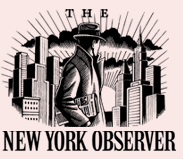 Let me note that, ironically, the Arthur L. Carter Journalism Institute at New York University, which offers a specialization in “Cultural Reporting and Criticism,” is endowed by and named after the founder and original publisher of the New York Observer. In 1988 Carter and his underlings tried to bully me into donating my copyright and subsidiary rights to his ineptly run and persistently money-losing newspaper.
Let me note that, ironically, the Arthur L. Carter Journalism Institute at New York University, which offers a specialization in “Cultural Reporting and Criticism,” is endowed by and named after the founder and original publisher of the New York Observer. In 1988 Carter and his underlings tried to bully me into donating my copyright and subsidiary rights to his ineptly run and persistently money-losing newspaper.
Because that would have cut into the revenues I earned from self-syndicating my Observer columns, which constituted a substantial portion of my annual income as a freelancer, this forced my resignation. In other words, Carter proved himself hostile to the survival of the very cultural journalists and critics this NYU division seeks to foster. The millions he spent to get his name above its doors don’t change that.
Hickory-Stick Tunes
Over the years I’ve met other critics ― my colleagues in photography, of course, but also specialists in art, literature, music, dance, film, and other forms. None of them knew, in their college years, that they would become critics, or had that as a plan. Perhaps that “disposition of the soul” hadn’t yet made itself known to them. Without exception, no one had ever presented that option to them as a career path during their student years.
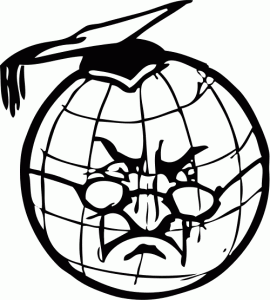
Planet of the Academics
For good reason, I should add. First and foremost, academe, for all its fashionable blather about the importance of “criticality,” scorns working critics. Most of us, after all, write not just for academics but for the educated general reader (even if a reader with a special interest in our medium of choice), and academics disdain those broader target audiences. De facto, this indicates that the editors and publishers who commission or accept our work consider it accessible to their readerships and worthy of relatively wide circulation ― thus, patently, unworthy of endorsement from the ivory tower.
Second, the publications for which we write are not “peer-reviewed” ― that is, their contents do not get vetted by other academics in our field, merely approved by the editors of those periodicals. Consequently, though they’re often cited by scholars, from the standpoint of academic credentials (for use in applying for a teaching position, for example), my 121 columns for the New York Times, which put my work in the hands of millions of readers, count for less than a single article in a peer-reviewed academic journal with a subscription base of under a thousand. Why, those articles aren’t written in academese! They don’t even have footnotes!
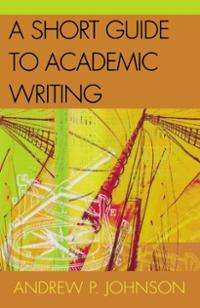
Andrew P. Johnson, “A Short Guide to Academic Writing” (2003), cover
Third, and most damningly, we actually get paid for what we write (if, too often, meagerly), which, from an academic standpoint contaminates our work with the taint of commerce. (Never mind that academic researchers expend great effort going after grants to support their projects.) Of course, getting paid for our work, whether as salaried staffers or as freelancers earning fees piece by piece, demonstrates without question that it has actual market value, unlike most academic writing, for most of which no one will ever pay a penny. The vast majority of academic writers can only get published by giving their work away to peer-reviewed journals that demand surrender of copyright and subsidiary rights, or to academic presses (for publication in book form) that often have the same requirements. They must perforce look down their noses at those of us who can actually earn a living with our work.
Fourth, it’s impossible to hold a full-time academic position while also functioning as a working professional critic. The demands of the academic life ― not just the teaching and class-prep and grading time, but the paperwork, committee work, student advisement work, and politicking for tenure ― simply don’t leave much time and energy for writing. Like myself, most of my colleagues who teach do so part-time, swapping job security and assorted perks and bennies for the ability to continue their critical projects. Those who opt to enter academe full-time (Andy Grundberg and Shelley Rice, for example) typically vanish off the radar screen of criticism.
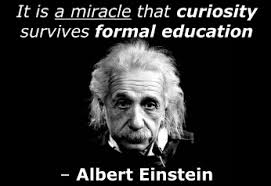 Fifth, and last, most career academics never left school; they simply switched sides of the classroom desk after earning their final degrees. Thoroughly institutionalized, secure in the “hive mind” environment of the post-secondary education industry, they find independent critics, historians, and scholars deeply suspicious, threatening on every level. Since they themselves can’t model such professional activity, or explicate from direct experience the ways of life and thought that enable it, one can’t realistically expect them to endorse it, or transmit any enthusiasm for it to their students.
Fifth, and last, most career academics never left school; they simply switched sides of the classroom desk after earning their final degrees. Thoroughly institutionalized, secure in the “hive mind” environment of the post-secondary education industry, they find independent critics, historians, and scholars deeply suspicious, threatening on every level. Since they themselves can’t model such professional activity, or explicate from direct experience the ways of life and thought that enable it, one can’t realistically expect them to endorse it, or transmit any enthusiasm for it to their students.
•
This post supported by a donation from the Estate of Lyle Bongé.






Leave a Comment